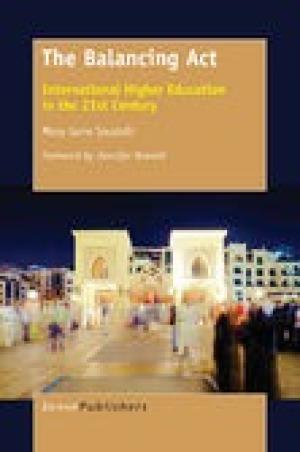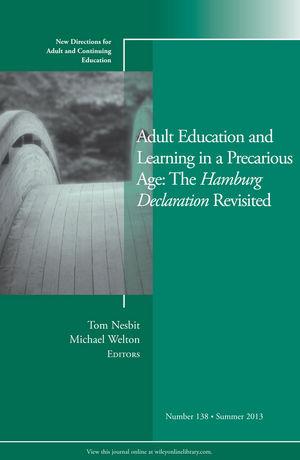Resources by Rhonda M. McEwen

What can teachers of theology and religion learn from a text on contemporary global education? Moreover, “If our world is constantly changing, particularly with globalization, how can educators support the nature of change through curriculum, teaching, and learning, particularly in international contexts” (30)? Mary Gene Saudelli, a Canadian educator with a rich background of teaching abroad, highlights the significance of contextual considerations in twenty-first century teaching and learning through this case study of nineteen international educators at Dubai Women’s College in the United Arab Emirates. Within the pluralistic context of many of our classrooms, as well as the increased emphasis on internationalization in many of our institutions, theological and religious educators will benefit from Saudelli’s insightful analysis of contemporary educational theory and curriculum through a global lens. Divided into three modules, the first describes the context of the study along with a discussion of contemporary theories of adult learning, including sociology of education and change theories. Module 2 presents the international educators, the Emirati learners, and the curriculum. And Module 3 explores issues within the learning context: religion, culture, society, and language. Finally, a brief conclusion captures salient lessons learned from this case study with application to twenty-first century curriculum design. Saudelli’s analysis of contemporary learning theories in light of the global educational context is of particular significance as it represents the integrative thinking that is essential for our thinking and practice in culturally-responsive theological education. For example, she examines Knowles’ work on andragogy and Mezirow’s transformative learning theory from an international and intercultural perspective, indicating the implicit Western individualistic bias that undergirds these approaches to learning. Moreover, values such as empowerment or emancipation, lauded in contemporary adult education scholarship, may look quite different through the lens of a more restrictive Arab context. Saudelli’s description of twenty-first century learning and its implications for curriculum design is another helpful discussion. In her words, twenty-first century teaching and learning refers to “an orientation that recognizes the incredible change that has been ushered in by virtue of a dramatic technological evolution and advancements, globalization and cross-national migration of both people and information, and intense shifting of educational needs” (63). Such curriculum is interdisciplinary, experiential, balanced, and interconnected with both local and global contexts (63ff). Moreover, its design supports the development of key skills that students require to be equipped to address the opportunities and challenges in our ever-changing world. It may be instructive to consider how these criteria could contribute to shaping theological and religious studies within our own educational institutions. The section on faith is somewhat brief, especially given the enormous impact that religion has in the context of this study, the Arab world. And while the author does reference epistemological differences in the conclusion (179), a more robust discussion as to their significance for global education would be a welcome addition to her otherwise helpful synopsis in the final chapter. Thus, while the particulars of this case study may be unique, the author suggests that the text can be useful, “as a way to think about how we approach internationalization in education” (12). Moreover, its fresh perspective on curriculum and educational theory through a global lens is one that is worthy of consideration for contemporary theological educators.

In 1997, the International Conference on Adult Education (CONFINTEA) crafted the visionary Hamburg Declaration on Adult Learning and Agenda for the Future (UNESCO, 1997) claiming that adult education could contribute to “a world in which violent conflict is replaced by dialogue, a culture of peace based on justice . . . and the creation of a learning society committed to social justice and general well-being” (2-3). What is the value of an idealistic treatise like the Hamburg Declaration? And what does it matter to theological education? Religious education faculty want their teaching to impact student learners and to make a positive difference in their global communities. In an ever-changing world, it is essential that theological educators situate their teaching within the larger sociocultural milieu, recognizing how contextual realities inform and shape both the process and content of adult learning. The Hamburg Declaration demands that educators heed its call and answer its pedagogical implications. Contributors to this current volume were invited to provide a critical analysis of the Declaration’s core themes, particularly in light of political, social, economic, and cultural transformations occurring throughout the world today (4). They chronicle the challenges and opportunities that adult education has had in issues surrounding democracy, women, literacy, work, environment, technology, international policy, and economics – particularly in the years since the declaration was published. While today’s pressing concerns may differ from those in 1997 – for example, the changing nature of work and unprecedented advances in technology – nevertheless, a review of these themes may be instructive for how educators might examine related issues within the context of religious and theological education. The Hamburg Declaration follows from the emphases of adult educators such as Brookfield, Freire, Hooks, and Illich, who affirm the political nature of education. Political and social realities do indeed shape the context of student learning. In cultivating appropriate pedagogical strategies to address the most urgent global issues, Adult Education and Learning in a Precarious Age suggests that we pay heed to the process of framing problems and how these inform solutions. Reiterating the emphasis in Hamburg, co-editor Welton affirms an “ethic of dialogue respectful of the different moral and spiritual options” that is “best able to promote the learning process” (17). Such dialogue is essential as teachers engage students in critical reflection of relevant global issues. Yet, the preliminary analysis by the authors of this volume invites further interaction from an explicitly theological perspective. Although one may question the actual progress made on the concerns identified in the Hamburg Declaration and the role of adult education, this work still serves as timely inspiration for values-driven religious educators who are motivated by the pursuit of truth, justice, and ethics; who long to foster transformative education with impact beyond the classroom. As Nesbit, this volume’s co-editor, asserts, “What is possible is shaped, in part, by our visions” (98).